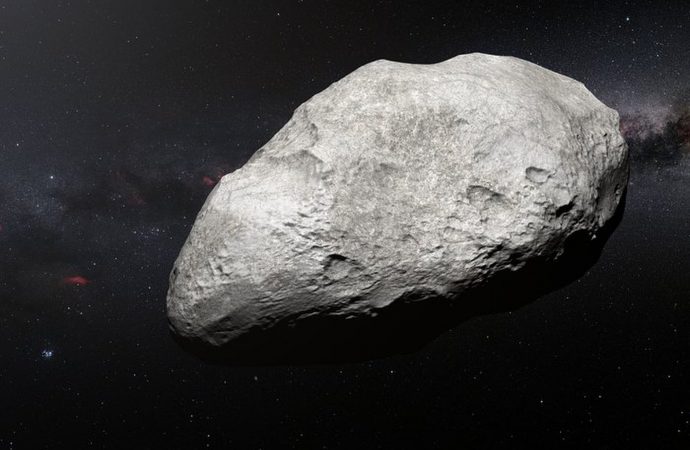Astronomers have spotted a carbon-rich asteroid in the icy region beyond Neptune called the Kuiper Belt — the first such asteroid ever found exiled from the inner solar system.

Credit: ESO/M. Kornmesser
Previously, objects that originated in the inner solar system have been found far out in the solar system — discoveries that have supported these theoretical models. But although “there have been previous reports of other ‘atypical’ Kuiper Belt Object spectra” — indicating the objects were made of substances not normally found in the region — none were confirmed to the level of quality of 2004 EW95, Olivier Hainaut, an ESO astronomer who was not part of the team, said in the statement.
This is the first time that a C-type asteroid has been concretely observed as far as the Kuiper Belt, according to the statement. This finding is some of the best evidence thus far of the theorized early solar system activity.
Wesley Fraser, an astronomer at Queen’s University Belfast in the U.K., first noticed the asteroid during routine observations with the Hubble Space Telescope. The exiled asteroid was visible because of its unique reflectance spectrum, a pattern of wavelengths of light reflected from an object. Because the spectrum was not typical for objects observed in this region,” it looked enough of a weirdo for us to take a closer look,” said Tom Seccull, a researcher at Queen’s University Belfast and the lead author of a new paper that explains these findings.
Seccull and his team observed 2004 EW95using the X-Shooter and FORS2 spectrographs on the ESO’s VeryLarge Telescope (VLT), and despite the sensitivity of these instruments, the team had great difficulty gathering data from the asteroid. “It’s like observing a giant mountain of coal against the pitch-black canvas of the night sky,”co-author Thomas Puzia, a researcher at the Institute of Astrophysics at the Pontifical Catholic University of Chile, said in the statement.
Despite the challenges of studying the dark, faint, moving object, the team was able to extract sufficient data using an advanced data processing technique, according to the statement.
“The discovery of a carbonaceous asteroid in the Kuiper Belt is a key verification of one of the fundamental predictions of dynamical models of the early Solar System,” Hainaut said. This finding is a critical step towards better understanding our early solar system, he added.
These findings were detailed in March in The Astrophysical Journal Letters.
Source: Space.com

































Leave a Comment
You must be logged in to post a comment.